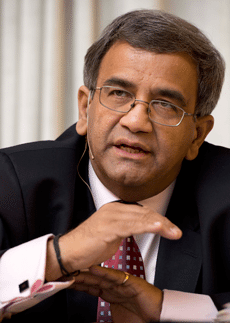
[miningmx.com] – ANGLOGOLD Ashanti has been sent back to the drawing board after Randgold Resources withdrew from an option to invest in Obuasi, the Ghanaian gold mine AngloGold mothballed earlier this year.
The R42bn group said the partners, who had formed a conditional investment agreement in September, could not extract the requisite value. Randgold Resources has a 20% return investment criteria on $1,000/oz.
AngloGold also alluded to problems extracting speedy regulatory clearances from the Ghanaian government.
“This decision follows concerted efforts by both companies to improve the project’s returns and also to secure an appropriate set of consents from the government of Ghana, within an ambitious time frame that would have allowed for a feasibility decision on the redevelopment of the mine in early 2016,” it said in a statement.
Key target dates were that Randgold completed the due diligence and development plan for Obuasi by the end of January and that the regulatory terms were agreed with the Ghanaian government and ratified in parliament by end-March 2016.
Randgold Resources had a similar explanation for the decision not to proceed with the investment with its CEO, Mark Bristow, adding that his company would continue “… to invest substantially” in its exploration programmes as well as by investigating potential growth opportunities presented by the market.
Said Srinivasan Venkatakrishnan, CEO of AngloGold: “We have made a concerted effort to unlock a new opportunity for Obuasi, and the work we have done lays a good foundation for the operation in the long term”.
“But in the current environment, we believe it is prudent to conserve our resources and to revisit this opportunity when market conditions improve,” he added.
AngloGold Ashanti spent $100m financing the development of Obuasi’s decline shafts. It was estimated it would spend about $50m in 2016 keeping the company in mothballs, or until another partner could be identified. Before it was put on care and maintenance, the mine cost AngloGold $300m in cash burn a year.
MECHANISATION
Bristow told Miningmx in October that as part of the due diligence, the partners would seek ways to mechanise the mine, but added that there were other factors to consider including the legacy at Obuasi.
“It’s not all about declines … the problem is 100 years of legacy all around. Can you convert a world class orebody into a world class mine?” said Bristow at the time. “Can you support all those who are sucking on it,” he added.
Mining at Obuasi began in 1897 when it was originally known as the Ashanti mine. It was subsequently operated by Ashanti Goldfields, a company in which the Ghanaian government had a stake.
In 2003, Bristow’s Randgold competed with AngloGold for control of the mine after Ashanti Goldfields ran into financial problems, but Randgold subsequently decided to walk from the deal a year later. This left the way clear for the merger of AngloGold with Ashanti Goldfields to form AngloGold Ashanti.
Questions that Randgold asked in its due diligence was how to tackle the fact employees in Ghana were paid in dollars, improving relations with stakeholders, and discovering the extent of its liabilities, including environmental.
“The mine doesn’t have the social contract to mine and it seems to be in conflict with everyone. A big focus is discovering the liabilities. We don’t know this currently. If we don’t find a solution it will be the [Ghanaian] government’s problem. That is a hard discussion that has to take place,” said Bristow in October.








